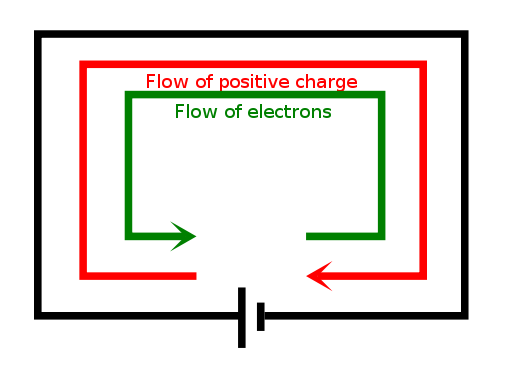
|
|
Note! Trying to explain this as easy as possible.
The best way to understand how electricity and circuits work is how electricity travels by a conductive material (like wire) through devices (like lamps, resistors, coils, etc.).
The electric potential, commonly known as Voltage can be defined as the probability of charge jumping from a positive node to a negative node.
When this happens (charge moves), we call this an electric current.
This potential energy is what can be used to produce work with an electric current.
For example, there is no current flowing out of an available wall outlet, but there still exists potential energy in it equating to ~120 VAC. By bridging the gap between terminals of this potential energy either with your fingers or a vacuum cleaner, you create the path for charges to flow and produce usable work either killing you or helping you clean your room ;)
* * *
Just like anything in physics and in this world, any system that produces a work is a usable system, otherwise it's useless.
Resistance is a form of work produce that can be directly converted to other form of energy (heat, mechanical, light).
For example, lamps are resistive since they use current to produce light and heat energy. Incandescent lamps are equivalent to a resistor since they have resistance in the coil that slowly burns to produce light.
This leads us to the very powerful Ohm's law.
V = I × R
Where V is Voltage in volts (duh), I is current in amperes (so 120mA would be 0.120 for I), and resistance in Ohms.
Memorize it!
As is, the form above can be used to calculate voltage drops across a resistive component.
For example, if we have a 9V DC source (battery), and have a 20Ω (Ohm) light bulb connected to it, we can find out the current going through our circuit. Consider this light bulb to be ideal, that is, its resistance does not change with heat.
I = V / R, 9 / 20 = 0.45 A, — or 450mA (milliamperes).
And that's pretty much it.

| |
A little more specifics on current
1. Electrons flow from negative to positive
2. Charge flows from positive to negative
Charge can be compared to Voltage and will be very important in polarised devices (semiconductors like diodes and transistors, and polarised capacitors).

Via Wikipedia, User:Flekstro

|
Add a poll to this thread
This thread is one of your Favourites. Click to make normal.Click to make this thread a Favourite.

| This thread is in a public category, and can't be made private. |
Powered by AvBoard AvBoard version 1.5 alpha
Page Generated In: 78 ms
|
|

